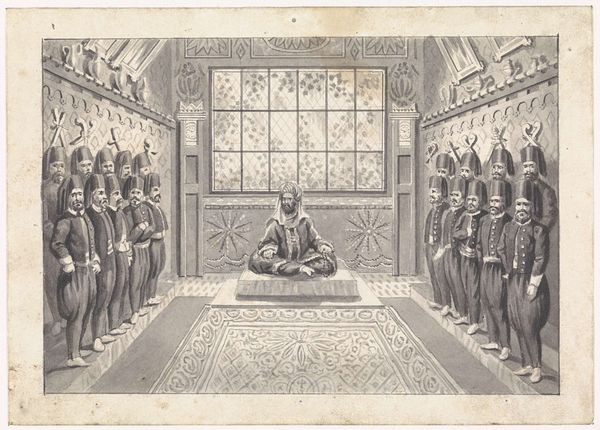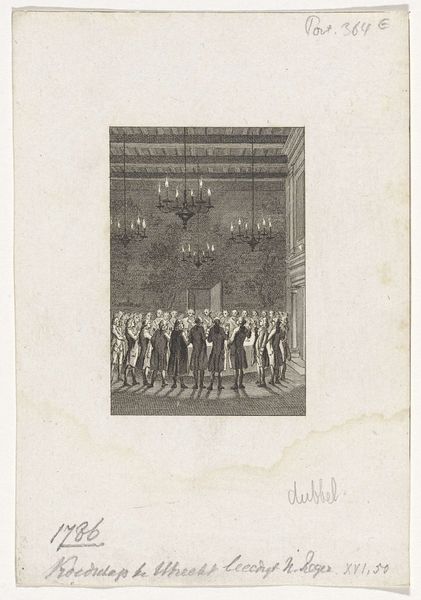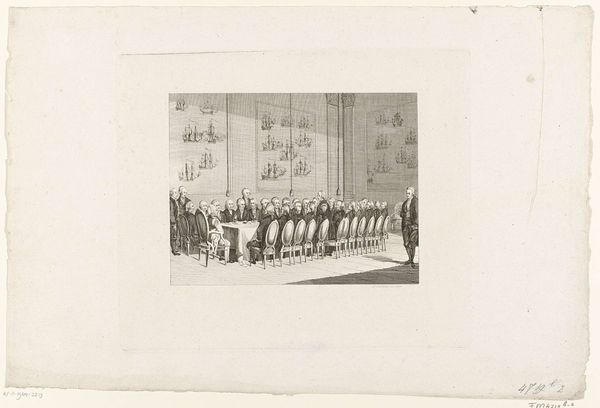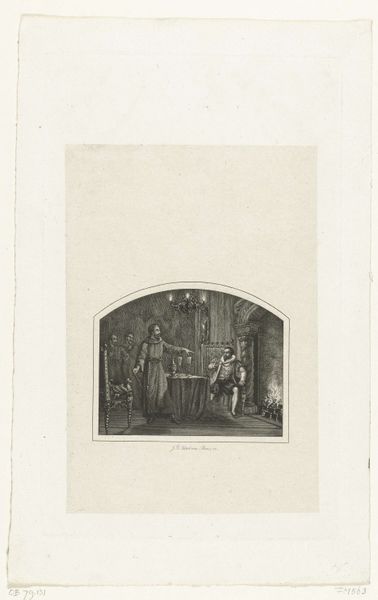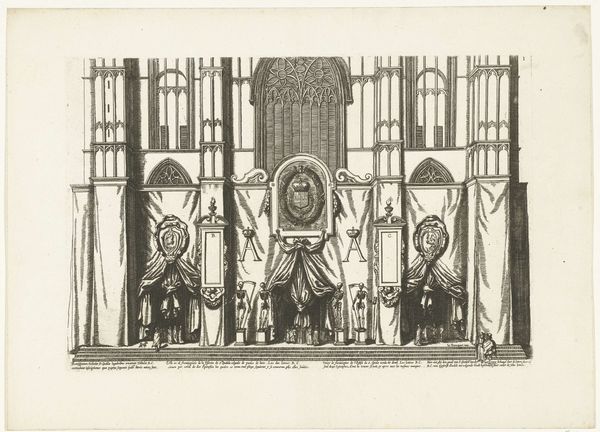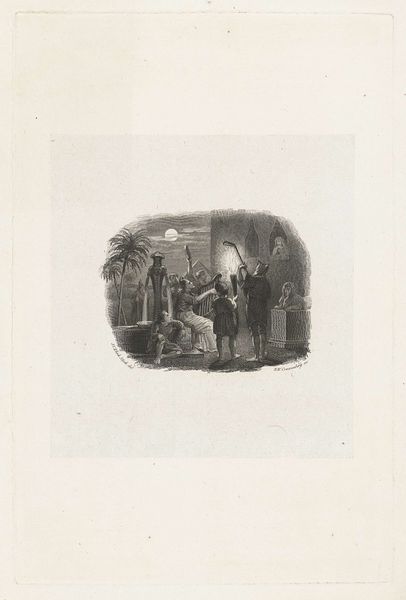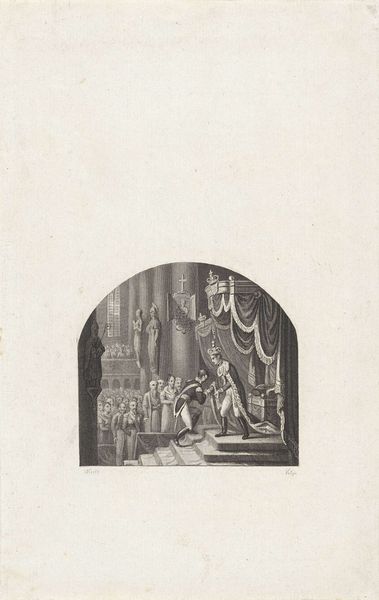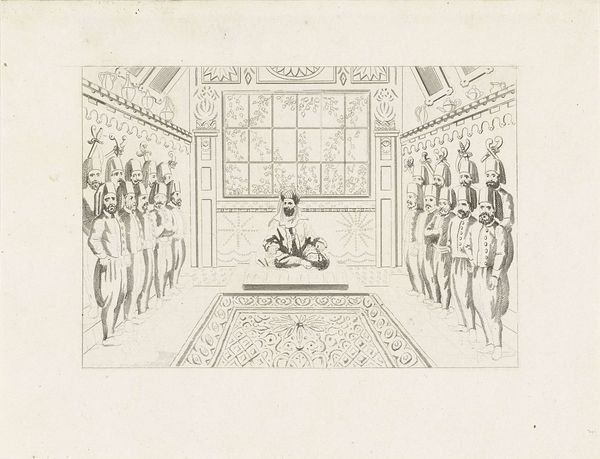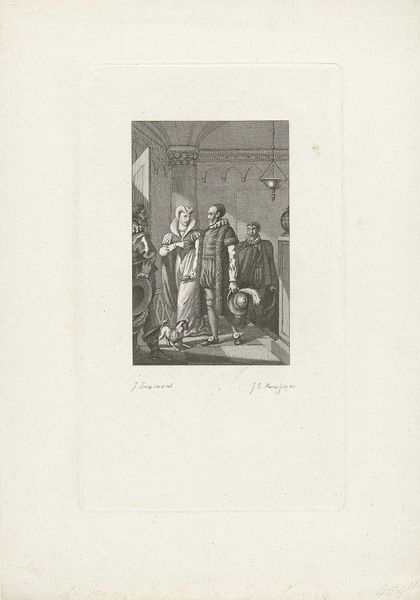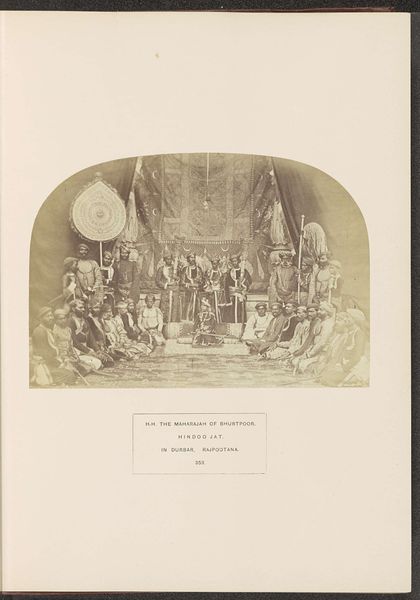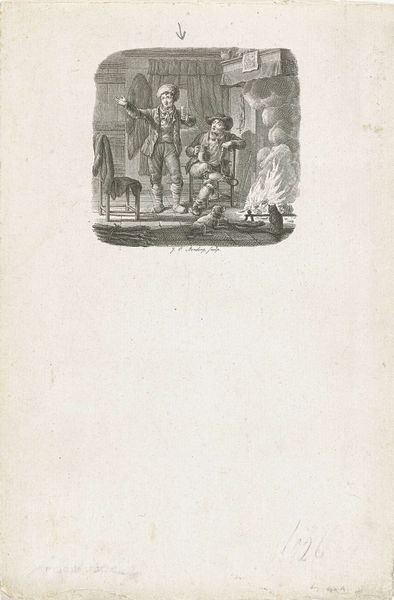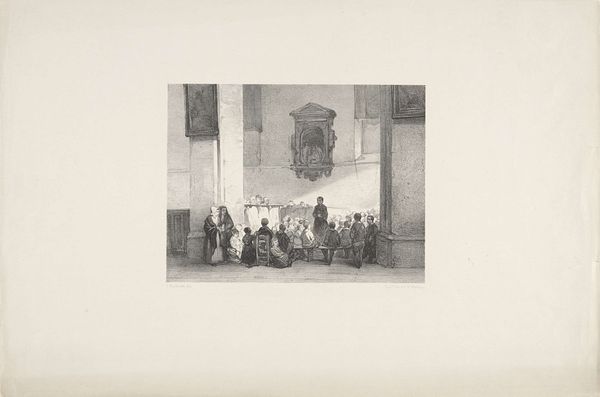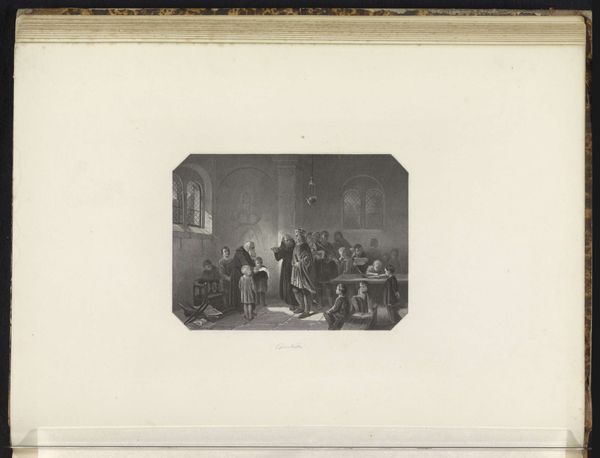
Man met tulband zittend in kleermakerszit en 19 soldaten die allen een fez dragen 1830 - 1845
0:00
0:00
print, engraving
#
portrait
#
aged paper
#
toned paper
# print
#
light coloured
#
old engraving style
#
personal sketchbook
#
orientalism
#
genre-painting
#
engraving
Dimensions: height 170 mm, width 243 mm
Copyright: Rijks Museum: Open Domain
Henricus Wilhelmus Couwenberg created this artwork, Man met tulband zittend in kleermakerszit en 19 soldaten die allen een fez dragen, with etching. The man sits cross-legged wearing a turban and a fez, each symbol carries potent historical weight. The turban, traditionally a signifier of wisdom and authority, contrasts with the fez worn by the soldiers. The fez emerged as a symbol of modernity and reform during the Ottoman Empire, meant to unify diverse people under a common banner. Yet, such symbols are never static. We see echoes of similar head coverings in various cultural contexts. The turban, for instance, finds relatives in the miters of religious figures across different faiths. The fez, initially a sign of progress, has been accused of forced assimilation and loss of cultural identity. The artist captures a specific moment, but also engages with broader themes of power, identity, and the ever-shifting nature of cultural symbols. Each symbol, therefore, isn't merely a marker of identity, but an emotional and psychological touchstone.
Comments
No comments
Be the first to comment and join the conversation on the ultimate creative platform.
